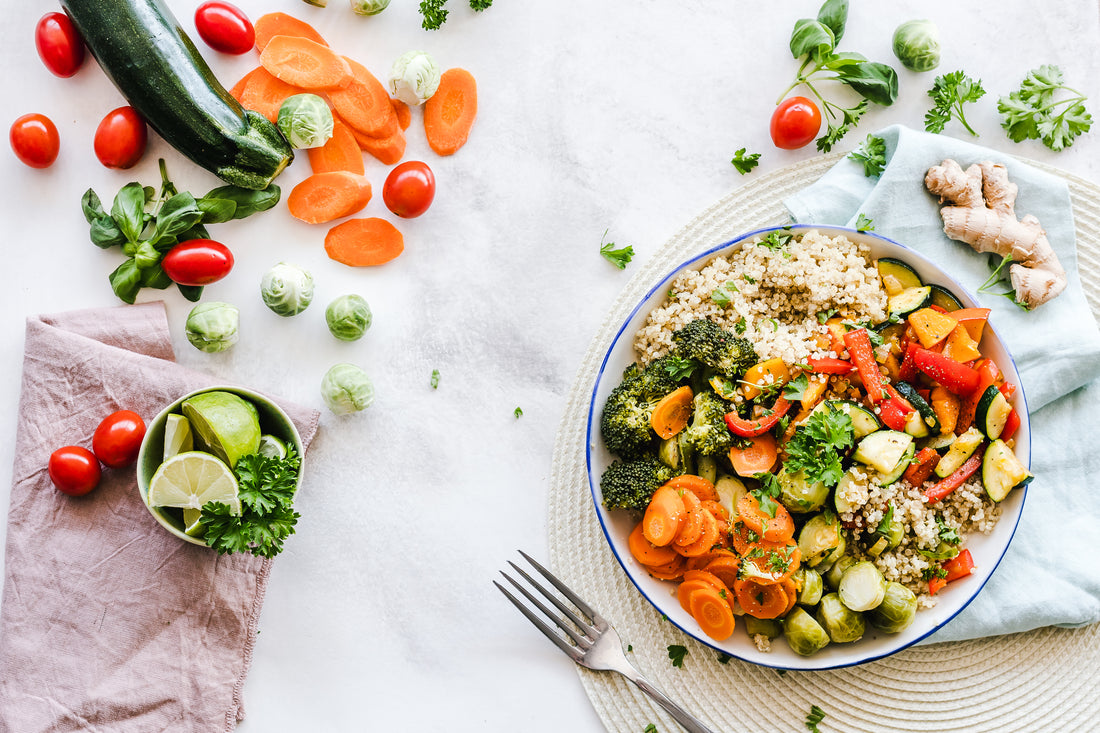
What is intermittent fasting and how to apply it?
Share
If you have ever heard of fasting or intermittent fasting, this note will be of interest to you.
We investigate this trend in the healthy world so that you can clear up your doubts with information from the expert in the field Christina Lima @limaflacaforever , Coach in Medicine and Functional Nutrition to tell you what fasting or intermittent fasting is in case you want to start doing it or just get to know more about it.
What is fasting or intermittent fasting and how does it work?
Many times we have heard that for a correct diet it is necessary to eat 5 to 6 times a day. Space meals every 3 hours, make small intakes very close together to "accelerate" the metabolism and try to have a strong breakfast or we will catabolize and, in short, our body will explode into a thousand pieces. “Eat breakfast like a king, lunch like a prince and dinner like a beggar…”. Our evolutionary history has had us fasting much longer than eating every 3 hours.... Why should it be any different now?
“There are many studies that state that combining periodic fasting periods with normal eating phases brings great health benefits. This is popularly known as Intermittent Fasting .” - Christina Lima
4 reasons to do fasting or intermittent fasting
- You will never feel hungry again
Christina Lima: Our body, an amazing machine, is programmed to "raise" levels of ghrelin (the hormone that controls hunger) always at the same times, just before the times we usually eat. It is no coincidence that those who eat 6-8 meals a day spend the entire day hungry. They programmed the body to "activate" hunger every 2-3 hours. That that more hunger means that the metabolism is faster is just a myth.
2. You will lose fat forever
Christina Lima: By eating fewer times, the plates you can eat become bigger so you can enjoy a little more at each sitting. You will hardly ever feel like you are on a diet. Once you manage to establish a deficit, the fat will disappear.
3. Your health will improve
Christina Lima: Intermittent Fasting has been linked to: increased longevity (Johnson et al, 2006), better blood lipid markers (Varady, 2011)
4. LDL cholesterol reduction.
Cholesterol is not as harmful as it is really thought, since there are several studies that show its benefits on health, especially since it is a direct precursor of testosterone.
How to do intermittent fasting?
Christina Lima: There are different methods to apply intermittent fasting to your eating program and on the body of each individual, although there are basic guidelines that can be followed easily without affecting our lifestyle too much.
Schedule a 24-hour period, once or twice a week. During this time, do not eat any food. To give an example, you have dinner on a Tuesday at 9:00 p.m., and do not eat again until 9:00 p.m. on Wednesday. The reason for the 24 hours is simple. It is an "easy" period to control, it is not so long as to go into famine and it is enough to experience much of the hormonal and physical benefits of intermittent fasting. It is also possible to limit it to periods of 16 hours, where you establish your diet around 8 hours a day, and then maintain a 16-hour fast.
When you come out of the fast, it is vital that you do not binge, but eat in a staggered manner. Start with good vegetable or animal proteins depending on your eating style. Drink as much water as you can! Consuming fluids is crucial to staying hydrated and fooling your brain as much as possible. In addition to water, the intake of teas and coffee is allowed, but always in moderate amounts. As for juices and smoothies, we must eliminate them, since their load of sugars will drastically increase blood insulin, playing against us. Needless to say, soft drinks and alcoholic beverages are 100% prohibited.
Stay busy. Many times, mere boredom deceives us and makes us "hungry" so we usually spend our time eating.
Any meal with more than 50 calories counts as breaking the fast. You can have one (or several) teas before breaking your fast, (remember, less than 50 calories in total).
The idea is that they make the most of the nutrients to optimize the processes of protein synthesis, muscle glycogen regeneration and recovery.
What you are going to do:
Christine Lima: If you train fasting 5-10 g of BCAAs before and after training.
If you train after breaking your fast, a small snack of 10% of your macros before or after, to ensure that the space between meals is not more than 3 hours.
If they get hungry at some point, they can't "snack", that is, eating between meals will only increase hunger (remember ghrelin?) and since I don't want them to feel hungry all day, snacking is prohibited.
What you are going to do: If you feel hungry between meals, drink a glass of water and wait 15 minutes.
The schedule looks like this:
6.30 AM - A tea and BCAAs (amino acids)
7:00 AM - Train
8:30 AM - BCAAs
1:30 PM - First meal
9:30 PM - Second meal
Build your schedule and stick to it. It does not mean that you will never be able to eat in the morning again. But while you get to burn all the fat you want, stick to your schedule.
So far we have covered the most important aspects of the nutrition side of fat loss. These posts were written by several collaborators apart from all my personal experience that I have with the practice of fasting for several years.
